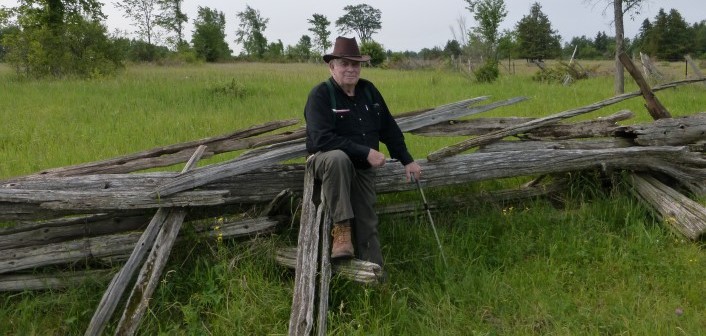Fences.
Working for a land trust, I never thought I would learn so much about agricultural fencing or know so many fencing contractors, farm suppliers and well drillers.
Then there are the guys who will show up on 24 hours’ notice with an excavator or a load of gravel, if need be, on Christmas Eve.
Those rubber boots they make for women just don’t cut it; you’ve got to get men’s rubber boots. If you don’t, it is a guarantee at some point, you will be out walking a back field with a contractor, surveying for a new fence and he will ford the stream in your way with two inches to spare from the top of his rubber boots. You, on the other hand, will either ford it and get wet feet or be left behind helplessly holding your GPS, calling, “Take some photos, please!”
One afternoon while visiting a fence job near the Talbot River, one of my rubber boots seemed so irretrievably stuck in the mud of a Carden ranch, I thought I would have to walk back to the road in my socks.
And did you know you can get poison ivy in the winter?
Carden is a harsh land to ranch, and the original fences were done in one of two ways: split rail, like the one in the photo on Pat McNaney’s ranch, or using wire fencing on posts drilled into braced wooden logs, all above ground, with impressive rock cairns for stability on the corners. Given the impenetrable limestone just under a thin layer of soil, and the large acreages that had to be fenced, these were the only options.
Today, many of those fences are in need of replacing, and the latest technology calls for paige wire fencing on drilled metal T-posts, which requires hiring a contractor. Considering the ratio of cattle to acreage, it’s an expensive proposition, and that’s the corner where conservation, culture and local economies all come together.
The species-at-risk programs of both the federal and provincial governments agree with the Couchiching Conservancy that supporting ranchers to continue grazing cattle is good for conservation. With few wild grasslands left, the “working grasslands” of cattle ranches are all we have left to support at-risk species such as bobolink and the eastern meadowlark. We also get support from the Lake Simcoe Region Conservation Authority to fence cattle out of streams and install an alternative watering source for cattle.
Armed with money from the conservation authority, the feds and the province, we meet with ranchers to have a look at their needs and see if they mesh with ours. When we find a good match, the project can happen quickly with low bureaucracy and low risk and expense for the landowner.
We’re very fortunate to have so many small-scale family farms in operation around Simcoe County, and the conservancy is proud to support this important part of our culture and economy while at the same time supporting threatened and endangered species.
If you are a farmer or rancher in Carden or Ramara Township, call our office and I’ll put on my rubber boots and pay you a visit to see if we can help.
Dorthea Hangaard is the project manager for the Couchiching Conservancy. She is currently working on private stewardship projects, the Carden water project and supporting the newly formed Copeland Forest Friends Association. Contact her at 705-326-1620 or dorthea@couchconservancy.ca.

